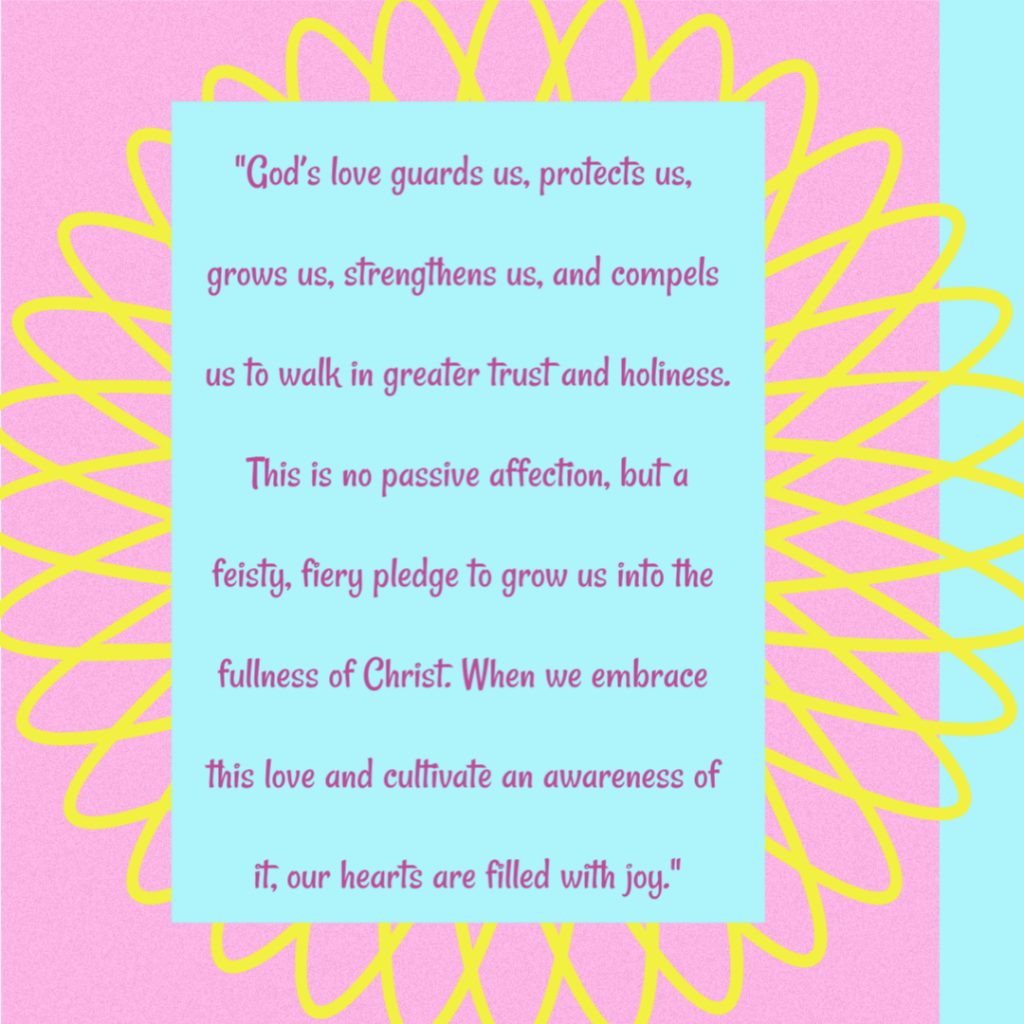At the end of last year, when I began pondering my One Word for 2020, I never would have predicted what this year would hold; in fact, I don’t think any of us could have envisioned these strange, uncomfortable, and frightening circumstances in which we currently find ourselves. Had I known then what was in store for me—for all of us—this year, I might have chosen a different word to embrace in 2020. But God’s ways are bigger than my own, and I don’t think it was a coincidence that He put joy on my heart as my word for this year. In a time when joy feels elusive, it is a trait I should be pursuing now more than ever before.
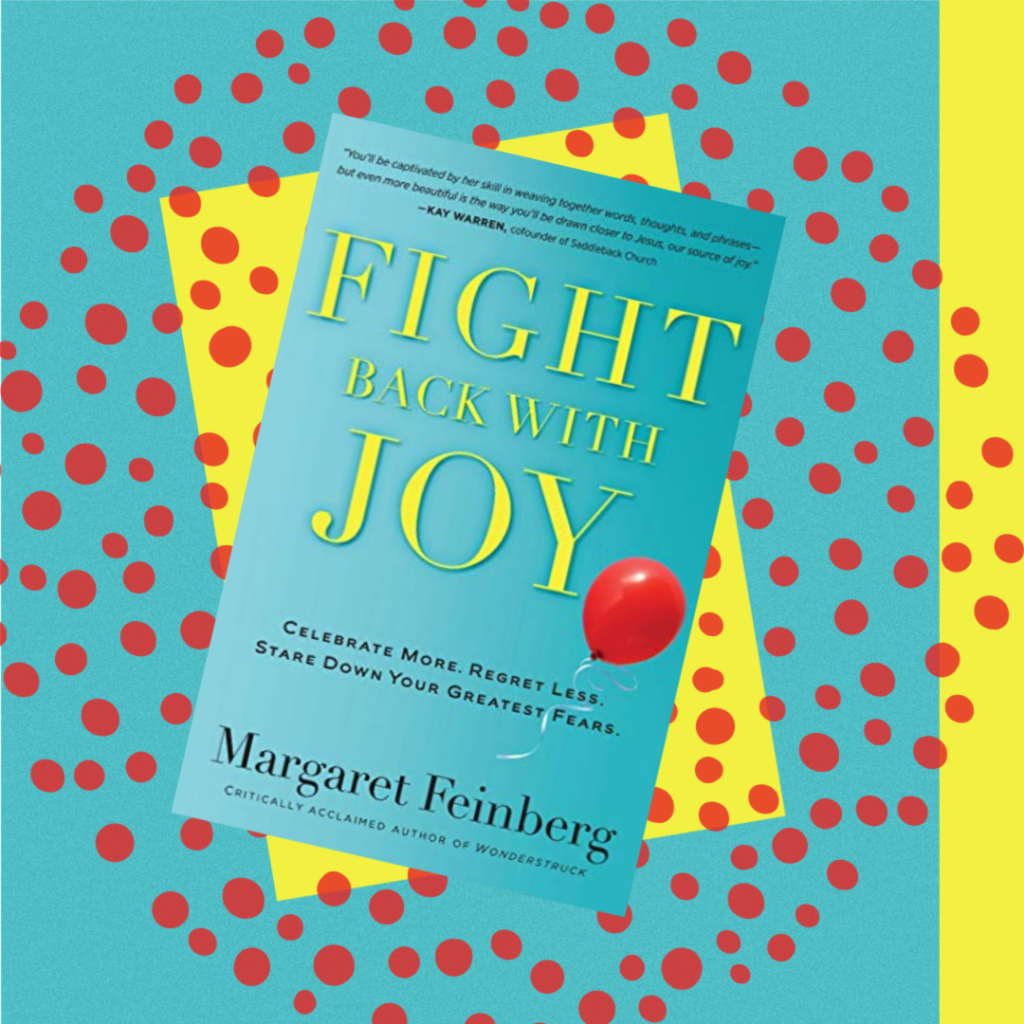
A few years ago, Margaret Feinberg also felt God giving her the word joy as the single word she would live by in the coming year. In her pursuit of a joy-filled life, Margaret embarked on a series of practices and challenges that she hoped would nurture joy. But she quickly learned that “you need much more than an experiment to unleash the power of joy. You need chutzpah, you need backbone, you need intentionality—and sometimes you need a crisis.”
Margaret’s crises did not come in the form of Coronavirus or quarantine. For her, the crises took the shape of a life-shattering cancer diagnosis that revealed God to be “an unconventional teacher [who] uses paradox to imbue us with common sense, propels healing through pain, and hauls clarity into our lives through the most confusing circumstances.” For a year and a half, Margaret was carried along on a “joy expedition” in which she learned that joy is a weapon we use to fight life’s battles. Fight Back With Joy is Margaret’s reflections on her time of using joy as a weapon in the battle for her own life.
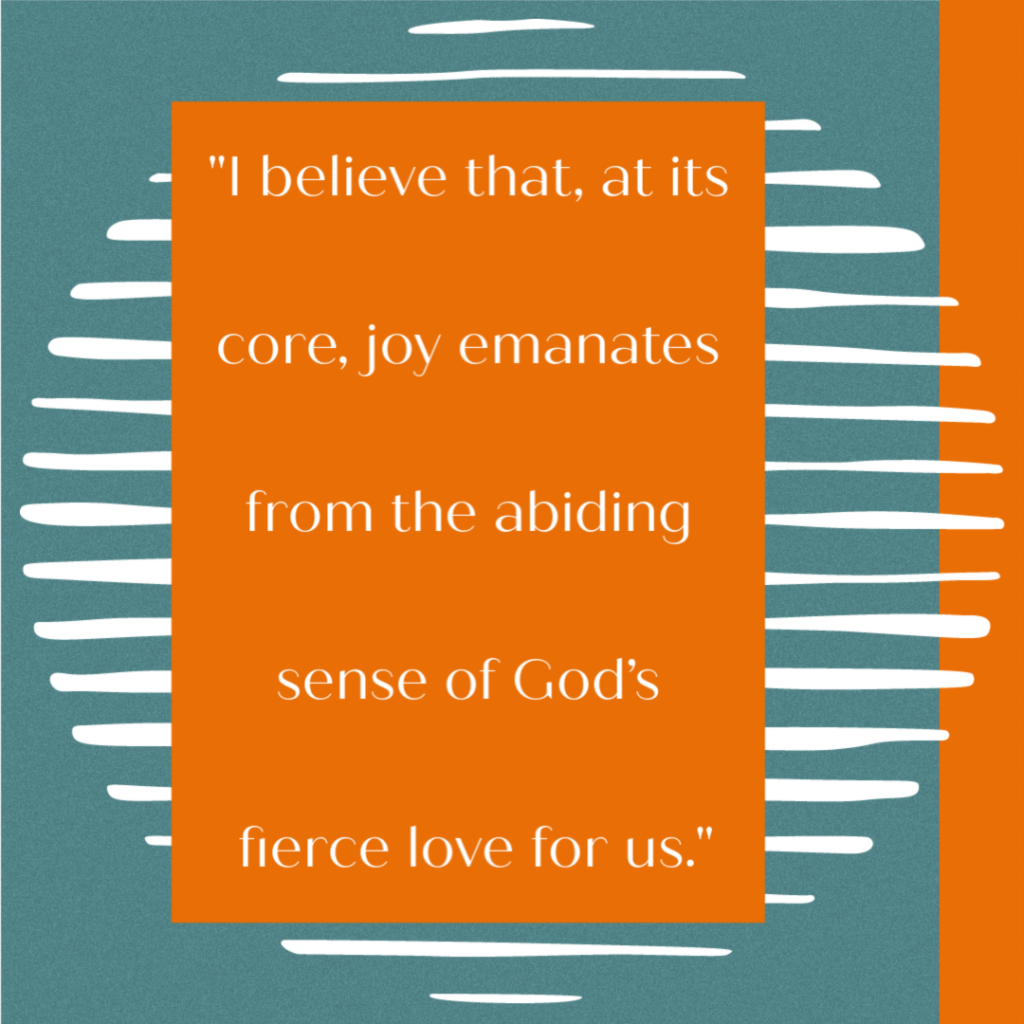
One of my personal challenges for helping me “choose joy” in 2020 is to read at least one book about joy each season. I came across this one through a quick Amazon search and dove in before even reading a description. The content surprised me: I was certainly not expecting cancer to be the running theme in a book on pursuing a joy-filled life. Margaret does not shy away from sharing the excruciating details of her cancer diagnosis and treatment—from the initial shock of finding a lump in her breast, to selecting her medical team, and the subsequent treatments and surgeries. While the medical descriptions themselves are rather cursory, her emotional reactions to them are raw and real and at times quite painful to read.
Remarkably, this is not a depressing read, but one filled with hope and—yes—joy. Margaret defines joy as “a spectrum of emotions, actions, and responses that includes gladness, cheer, happiness, merriment, delighting, dancing, shouting, exulting, rejoicing, laughing, playing, brightening, blessing and being blessed, taking pleasure in and being well pleased,” and all of these emotions shine through her story. Even when experiencing crippling pain and heartbreaking loneliness, she practices the ACT of joy. And as she exercises her “joy muscles,” she models how we can do the same.
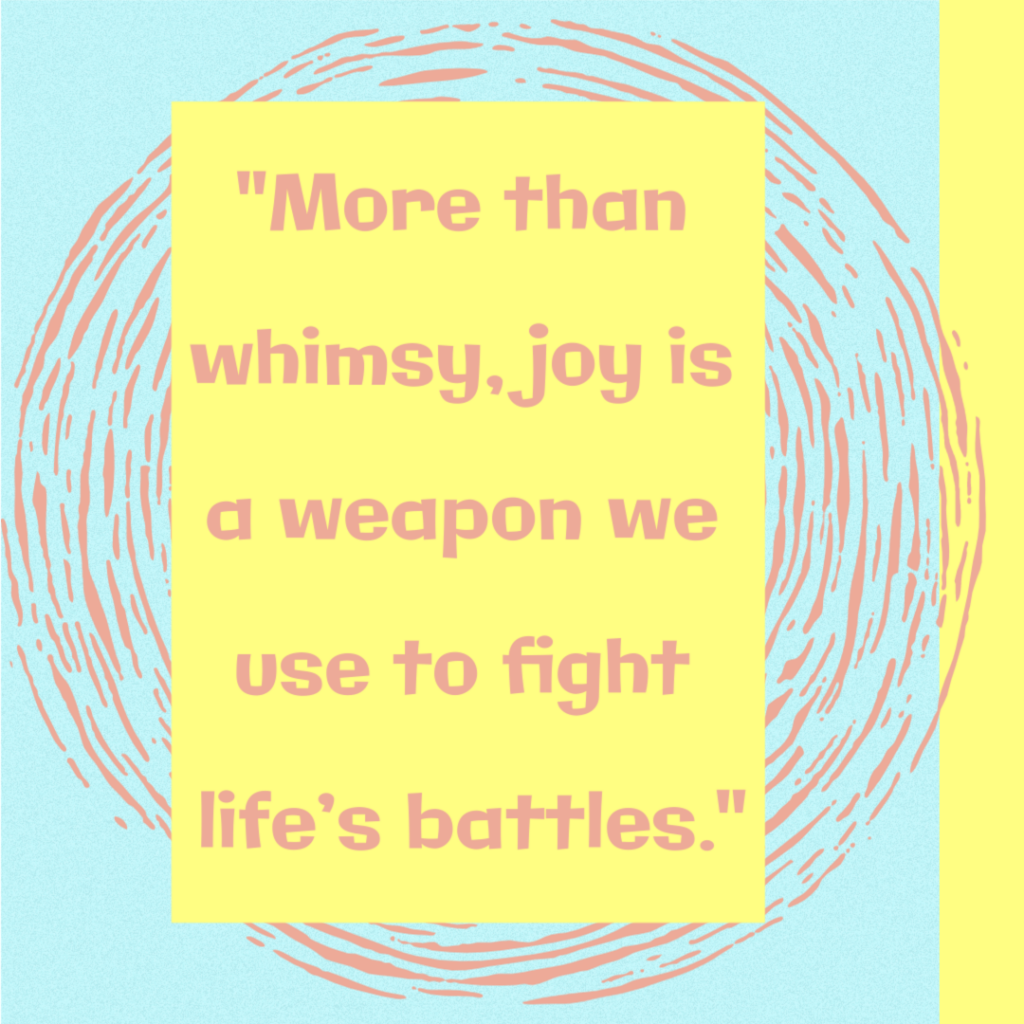
Margaret’s journey revealed to her (and us) many surprising truths about joy and about God. Soon after her diagnoses, she learned that the journey to joy begins with acceptance and advances through adaptability, which leads to a greater dependence on Christ. Her continued treatments taught her that blessings aren’t found in the absence of difficulties, but in the presence of God. Margaret’s tears revealed the ways that fully-felt grief can lead to rivers of joy. And as she wrestled with others’ imperfect reactions to her experiences, she found that joy comes from forgiveness, gratitude, repentance.
Margaret’s personal story serves as the primary vehicle for sharing the lessons she has to teach us, but they are illuminated through stories from scripture. God’s Word is front and center in this book, and I appreciated Margaret’s ability to bring Biblical scenes to life in ways that make them relevant for the contemporary reader.
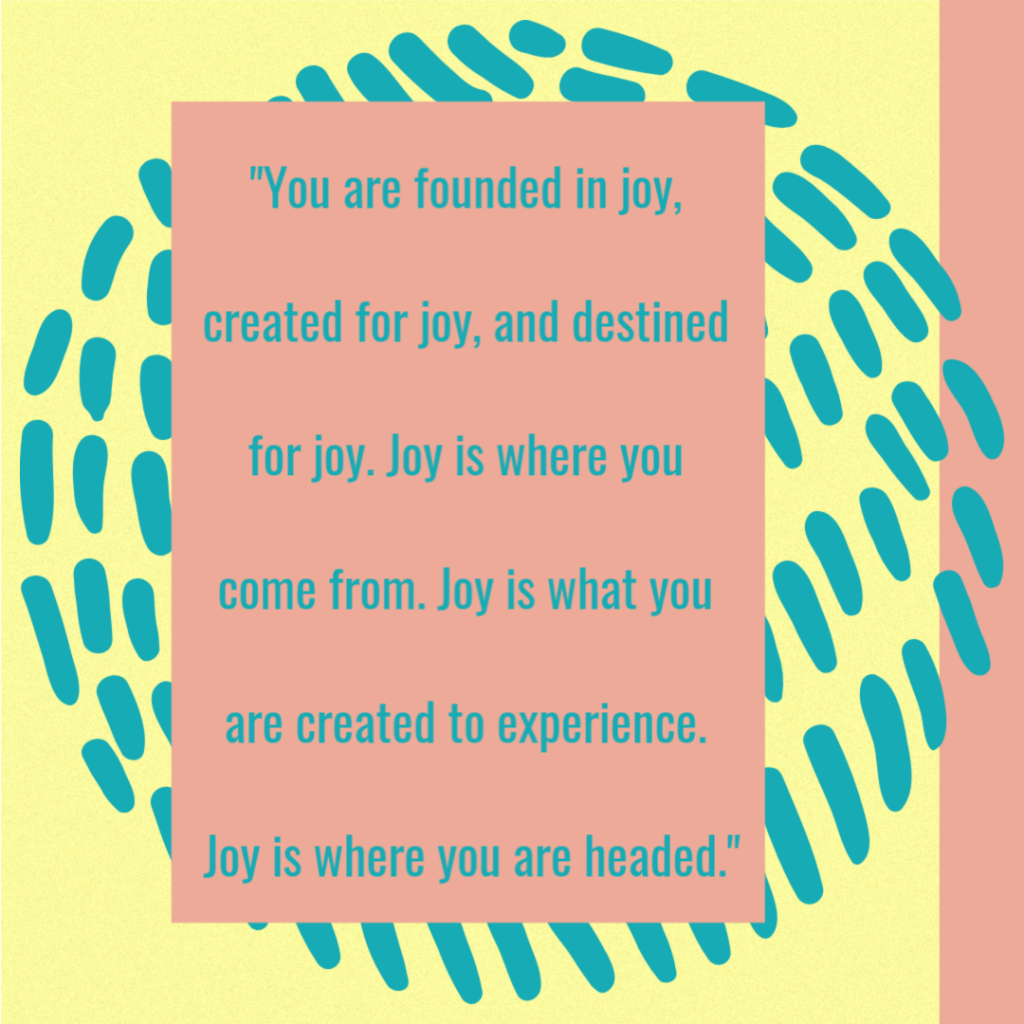
As I continue to explore the notion of joy this year, and examine what it means for me to pursue joy in every day, I keep coming back to a truth that Margaret explains quite articulately at the start of her book: “When we fight back with joy, we no longer size the character of God according to our circumstances, but we size our circumstances according to the character of God and his great affection for us. Practicing defiant joy is the declaration that the darkness does not and will not win. When we fight back with joy, we embrace a reality that is more real than what we’re enduring and we awaken to the deepest reality of our identity as beloved, joyful children of God.“
When I embrace this truth, I am able to walk in joy in the midst of the most dire circumstances. I can have a joyful heart when the world seems precarious, my home is chaotic, and my emotions are far from chipper . . . because joy is more than a feeling—it’s an action that I embody in the way I choose to respond to my present circumstances. And in the midst of these circumstances, I choose to remember that my joy is solely dependent on the presence of an unshakable, all-powerful, devoted Heavenly Father whose presence and love are wellsprings of limitless JOY.
